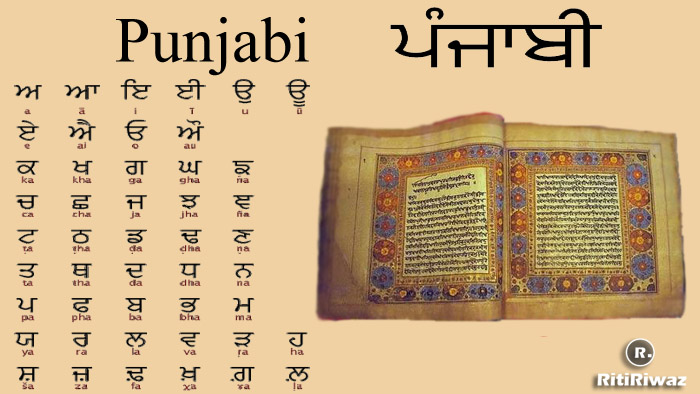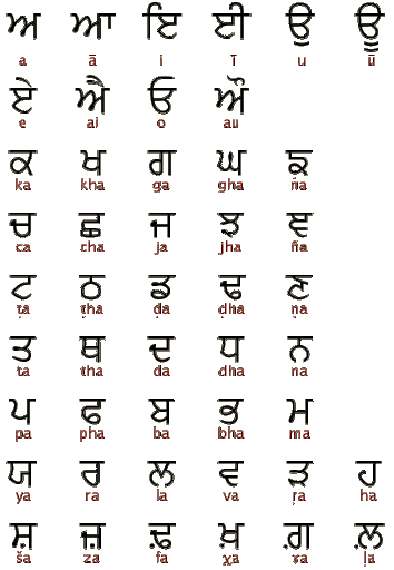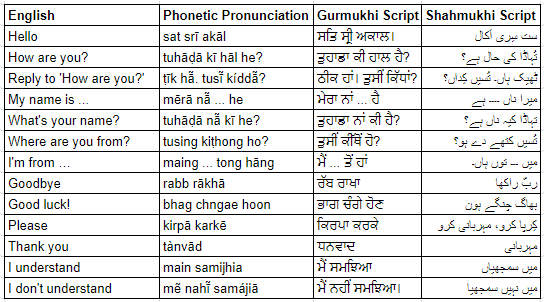Punjabi Language | Punjabi History and Facts

Punjabi also spelled as Panjabi is one of the Indo-Aryan language and the official language of Punjab state, and is widely spoken and written in all it’s neighboring and a few other states.
Globally, Punjabi language is spoken by more than 100 million people and is the 10th most spoken language in the world, with the majority of its speakers in India and Pakistan. Punjabi can be categorized as Western Punjabi and Eastern Punjabi. Western Punjabi broke up into Saraiki, Potwari, and Hindko. These came to be counted later almost as separate languages. Eastern Punjabi remained independently as what is Punjabi today.
Two scripts are used for Punjabi writing – Gurmukhi script is used in India by Sikhs and Hindus, whereas Shahmukhi script is largely used in Pakistan by Muslim Punjabi. Literature in the Punjabi language is published in India and Pakistan, and in many countries of Europe, North America, and Southeast Asia wherever Punjabi diaspora have settled in large numbers.
History of Punjabi Language

The Punjabi language is written using two systems: Shahmukhi — a Perso-Arabic alphabet ( ست سِری اَکال), and Gurmukhi — a modified Sikh script (ਸਤਿ ਸ੍ਰੀ ਅਕਾਲ।). The word Punjab is made with two words Punj and ab. The word ‘Punj’ means Five and ab mean water. So the meaning of five water is literally known as the land of five rivers. These five rivers are known as Sutlej, Beas, Jhelum, Ravi & Chenab which are the tributaries of the Indus River.
The Punjabi language has emerged as an independent language in the 12th century. Punjabi is a descendant of the Saurasheni Prakrit which was spoken as the main language in medieval Northern India. Baba Sheikh Farid is known as the first poet of Punjabi language The earliest traces of Punjabi can be found in the works of Nath Yogis, Gorakshanath, and Charpatnath in the ninth century. Punjab faced the brunt of Moghul invaders during the middle ages.
Guru Nanak, who lived between 1469 and 1539, was the founder of the Sikh religion and he gave a new impetus to the Punjabi language. The fifth Guru, Arjun Dev, 1563-1606, compiled the Sikh scripture, the `Adi Grantha’, or the `Grantha Saheb’ in Punjabi. During these middle ages, the Hindu and Sikh writers wrote in the Punjabi language.
After the British took over Punjab, the Hindi language gained prominence in Punjab. The Hindus too with their reform movements like Arya Samaj and Sanatan Dharma gave importance to Hindi. Since the partition of Punjab in 1947, Punjabi that is spoken in both Pakistan and India has drifted apart from each other. The Indians rely heavily on Sanskrit vocabulary through Hindi. The Pakistanis rely mostly on Farsi and Urdu’s influence with the Shahmukhi script.
Suggested Read: Punjab – Culture, and Tradition
Dialects of Punjabi
The key dialects of Punjabi in India include Majhi, Doabi, Malwai, and Powadhi that have regional Hindi/Sanskrit influence on the main Punjabi language. In Pakistan, the regional Sindhi language influences the main Punjabi language resulting in dialects such as Majhi, Pothohari, Hindko, and Multani. Pakistani Punjabi also has Persian, Central Asian, and Arabic vocabulary influences.
To write Punjabi, one can use three alphabets – namely, Gurmukhi, Shahmukhi, and Devanagri to a lesser extent. The name Gurmukhi means “from the mouth of the Guru,” Shahmukhi translates to “from King’s mouth” and Devanagri implies “The container of divine light.”
Gurmukhi alphabet

The Gurmukhi alphabet developed from the Landa alphabet and was standardized during the 16th century by Guru Angad Dev Ji, the second Sikh guru. The name Gurmukhi means “from the mouth of the Guru” and comes from the Old Punjabi word guramukhī.
Structure

Grammar Punjabi has three typical tones that developed from the lost voiced aspirate series of consonants. Phonetically, the tones are rising or rising-falling contours and they can spread over more than one syllable. The grammar of the Punjabi language is the study of the word order, case marking, and other morphological structures.
The Punjabi language has homonyms. They are words that have the same spelling and pronunciation but with different meanings and usually different parts of speech. Punjabi nouns have an assigned gender and they can be either masculine or feminine though some nouns can be used for both the genders due to dialectical variations.
The gender value is purely grammatical for inanimate objects. The assignment of gender to inanimate objects is arbitrary. The nouns also can be singular or plural. There are two cases – direct and oblique and this applies to almost all the nouns. A typical Punjabi noun can have on an average of five to six different forms depending on the values of number and case. In Punjabi, there are six types of pronouns. They are personal, reflexive, demonstrative, indefinite, relative, and interrogative.
Punjabi adjectives can be classified into two categories – inflected and uninflected depending upon whether they change forms for number or case or not. Punjabi verbs change forms for gender, number, person, tense, and phase. Like nouns, the verbs have two genders – masculine and feminine, and two number forms that are singular and plural.
The verbs also take forms for three-person cases – first, second, and third-person categories. The verbs can be in perfect or non-perfect forms. The verbs take form for future tense only and an auxiliary verb form is used for the present and the past tense. Postpositions are similar to the prepositions in English. They link the noun and the pronoun to other parts of the sentence. There are various particles that are used in the Punjabi sentences for emphasis and negation. There are four main types of particles – emphatic, negative, honorific, and vocative.
